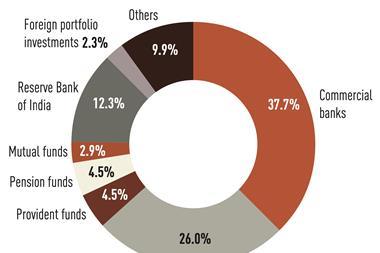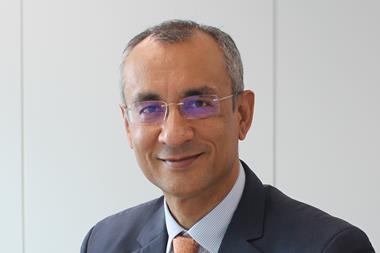The China ETF is space is in the midst of a growth spurt with the range of products on offer undergoing a rapid expansion and investor interest in index funds continuing to grow both domestically and abroad.
China’s proactive reformist regulators are encouraging innovation on all fronts and view ETFs as a convenient vehicle to bring capital into the market from overseas, while at home providing growth opportunities for the maturing fund management industry and raising the sophistication of retail investors – a problem which has long dogged the domestic investment space. From the point of view of investors meanwhile, ETFs continue to offer an efficient means to tap otherwise inaccessible growth trends as a vehicle for cross-border access or for honing in on specific domestic sectors.
Changing regulatory landscape
With domestic ETFs still very small in number and the regulatory limits on cross-border activity easing at a rapid rate, the growth opportunities are clear. “The regulator in China has a very positive outlook on ETFs and that’s good for the industry. You see a lot of growth in China in ETF assets,” Frank Henze, MD of SPDR ETFs in Asia Pacific for State Street Global Advisors (SSgA), tells IPA. “This is a developing space. Access into China, opportunities within China and availability of investments that come out of China, such as through QDIIs – development is taking place on all of these fronts and this is very exciting.”
While the regulatory landscape is changing fast, paving the way for a wider range of domestic products and more innovative cross-border offerings, well-established offshore funds from global issuers that use an array of different structures to give foreign investors exposure to the market still remain by far the largest and most popular vehicles due to their high liquidity and long track record. These have been the subject of renewed interest after the world’s second largest economy recovered from its recent dip and attractively-valued Chinese equities rallied strongly late last year. “The appetite to make an allocation in China is increasing, and we see this across most of our clients, primarily in Asia because there’s obviously a local dynamic there, but also further afield in Europe and the US, where more and more institutional clients are looking to invest into China,” says Henze.
In one sign of the continued interest in conventional ETF offerings from established international providers, the iShares FTSE A50 China Index ETF, a synthetic ETF and one of the most popular China-focused funds, was the most traded security on the Hong Kong Stock Exchange in January. AUM and daily trading volume have seen strong growth in the past six months – daily trading volume set a string of new records this year while AUM soared to $7.5bn at the end of March. Along with other China-focused funds the ETF has seen some outflows more recently, but this might be expected after the run-up earlier in the year.
The popularity of iShares A50 along with its counterpart under the RQFII scheme, the CSOP FTSE A50 ETF, partly reflects continued investor interest in large-cap indices like the FTSE A50 despite growing criticisms that such groupings give too narrower an exposure. The availability of hedging tools for the A50 is another plus for investor, and the A50 futures contract available in Singapore has seen a drastic pick up in trading and liquidity in the past 12 months.
Growing interest
Interest in more narrowly-focused products, such as sector-specific ETFs, is nonetheless likely to increase significantly going forward. Jane Leung, Head of iShares Asia Pacific, says: “Most products so far have been broad-based, so I really believe the future for China ETFs is going to be in sector-specific products. That’s going to be key as the whole ETF ecosystem develops. And the launch of futures contracts that provide effective hedging is really going to spur on the uptake of sector ETFs.”
“Consumer discretionary sectors are certainly going to be very interesting in the future and investors are also looking to financials as well as a way to tap future growth prospects in China,” Leung says. Government efforts to rebalance China’s economy away from its dependence on investment and exports towards a consumption-led growth model are likely to help drive such changes.
As the liberalisation of China’s financial markets gains momentum and after the RQFII programme was opened to foreign players earlier this year, major global issuers are also keen to get a foot in the door to take advantage of the possibilities arising from wider access routes – such as the opportunity to establish a direct hold over the assets underlying ETFs and launch physical funds. Leung says: “The market is really changing in China and we view all these changes as very positive. The realisation of the QFII and RQFII schemes is very positive for the Chinese market and the Chinese ETF space in particular. We’re definitely looking into potential opportunities within the QFII and RQFII space so we can bring the best products to investors.”
SSgA meanwhile has already embarked on efforts to establish a firmer foothold on the Mainland, building on its experience of working with Chinese clients through Hong Kong. The US firm is currently awaiting regulatory approval for a joint venture with a Chinese partner through which it will be able to provide products for the domestic market.
“This is a very important development for us and shows the firm’s recognition that China is a very important market place at the moment and will be even bigger going forward,” says Henze. “The pool of investable assets in China is growing, both public and private. That is a very important development and SSGA is very active and has a very long-standing engagement with Chinese clients - both institutional as well as QDIIs – spearheaded through our Hong Kong operation.”
Opening new doors
As well as creating opportunities for issuers, the regulatory changes in China are also opening new doors for service providers. Rex Wong, MD of Asset Servicing at BNY Mellon, says: “We have been supporting some of the fund managers on the global custody side. We are also interested in looking at fund administration as regulators have now permitted fund managers in China to outsource fund administration to third-party providers – though this is still really at the very early stages for BNY.
“What we’ve been really working on over the past few months is helping some of our clients outside China who are looking at RQFII fund launches. I’ve been hearing of more and more interest in RQFII products among clients globally – so this will be one our focuses in the next six to nine months.”
The RQFII scheme initially got off to a rocky start, mainly due to unpopular allocation restrictions on the first batch of products that limited equity investment to 20% with the remaining portion restricted to fixed-income. But enthusiasm for the programme has returned after these rules were scrapped last year and the overall quota saw a massive expansion, opening the door for domestic fund managers to launch physical ETFs in Hong Kong that offer investors a more direct access route to the A-share market than their synthetic equivalents. And in perhaps the most important development yet, earlier this year regulators made the long-awaited move of opening the scheme to the Hong Kong-based subsidiaries of foreign financial institutions.
“The RQFII programme has moved into a new phase now it is open to foreign entities, and competition is set to intensify. RQFII ETFs have proven a successful product, outperforming their synthetic equivalents, and more will be launched as long as inflows continue,” Winnie Deng, senior analyst at Shanghai-based Z-Ben Advisors, tells IPA. While the four Chinese fund managers which have so far issued ETFs under the scheme may not welcome fresh competition from abroad, it is likely to make RQFII offerings more attractive to investors by lowering fees and improving product diversity.
Taiwan moreover is soon likely to join the RQFII party, while efforts to cement regional market integration are also moving forward on other fronts. RQFII ETFs were listed in Tokyo earlier this year as Japanese Depositary Receipts while Mainland regulators have also been working with their counterparts in Hong Kong on the mutual recognition of fund products, which would create the first region in Asia-Pacific to recognise cross-border products.
Cross-border indices
The Hong Kong Stock Exchange along with the Mainland bourses furthermore recently launched two cross-border indices, one tracking the large caps in Shanghai and Shenzhen, and the other the largest Chinese firms listed in Hong Kong. BNY’s Wong says: “We’ve already heard fund managers expressing interest in launching ETF products linked to these indices, which will help create regional market ETFs within the Greater China region – as yet there are no products that track equities on all three stock exchanges.”
In the domestic market meanwhile, regulators have also been pulling out all the stoppers in recent years as they look to ETFs to widen the pool of products available, raise the sophistication of retail investors and help local fund managers diversify and expand their operations. This year saw the launch of China’s first sovereign bond ETF, while funds tracking corporate bonds, gold and overseas equities are also waiting for regulatory approval.
“There is growing interest in passive investing in general. In the ETF space we are likely to see more interest in innovative products such as sector-specific funds, but also in more conventional offerings as well,” says Z-Ben’s Deng. Also likely to emerge are products linked to the recently launched CSI 300 leveraged and futures indices. These will provide vital hedging tools which could help further catalyse growth in the domestic space.
“The liberalisation of the mutual fund platform will be an important development, bringing in new issuers and increased competition. Specific regulatory changes are set to be clarified in June and we’ll see then what sort of products emerge,” says Deng, adding that managers need become more conscious of the demands of retail investors.
For institutional investors, the relaxation of China’s strict allocation rules is another key regulatory development on the horizon. Some institutional investors such as pensions and insurance firms are currently being held back by regulations limiting their investments in equities. When this is liberalised ETFs are likely to prove an attractive vehicle, Deng adds.
As regulations continue to ease and Chinese investors start to become more sophisticated and look further afield, ETFs will have another essential role to play as channel for outbound investment, giving an access route into foreign stock markets. China Universal Asset Management just recently licensed the EURO STOXX 50 Index, paving the way for the first domestic ETF tracking foreign equities.
SSgA’s Henze says: “Another important aspect is making products available to QDIIs and other entities that can invest in overseas ETFs and assets. We are very active with QDII managers and the institutional community to provide solutions through ETFs – these could be multi-asset solutions or specific portfolio solutions or simply a completion strategy for a certain underlying asset class that the manager is seeking.”
The overall volume of outbound investment in ETFs meanwhile can be easily underestimated, partly due to the confusing range of vehicles available. Henze adds: “We think the origination of investment out of Asia is much bigger than the official statistics tell you, and we are a large driver of these investments out of Asia into ETFs – these assets could be invested in our local ETFs, our US-listed SPDR ETF range, or our European SPDR ETFs where we have a growing product range.”
Looking forward, the rapid expansion of China’s ETF space is unlikely to slow as regulators keep pushing their reformist agenda and China’s financial opening continues, meeting demand for new access routes into the world’s second largest economy. With the number of ETFs currently listed on mainland exchanges still small, the domestic market also offers abundant growth potential.
For both investors and providers, the challenge will lie in keeping pace with the ever-changing regulatory environment and staying abreast of the increasingly sophisticated range of products on offer.











No comments yet